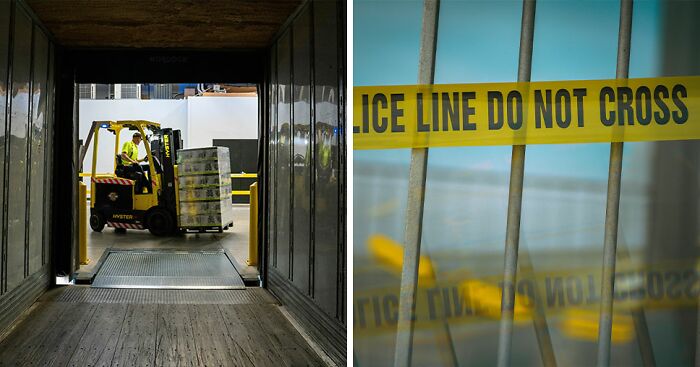
Breathtaking Driftwood Wyvern (dragon) By Sculptor James Doran-webb
James’ blog post about how he built this amazing Dragon
THE WYVERN IN THE BAOBABS
For some years I have toyed with the idea of creating a driftwood Dragon, so imagine my excitement when, during my visit to Singapore in 2013 to install my cameo of three galloping thoroughbreds, Doctor Tan, CEO of Singapore’s Gardens by the Bay asked me if I could make them a Wyvern (a Wyvern is a 4 limbed dragon, with front legs that form its wings).
I started work on the concept immediately. In order to create as much drama as possible, I decided to position my dragon high in a tree, making as if to fly down. This would elevate the Dragon giving him serious presence. I had found the perfect tree; dead since 1936, standing four meters tall with one solitary branch extending from the top of the tree almost at a right angle. This cantilevered branch was perfect for a Wyvern’s corkscrewed tail!
Before embarking on the life size sculpture I worked on a Maquette or miniature to test the orientation of the body, the neck and the corkscrew twist of the tail. I also made a model of a shipping container in the same scale to test how I would load the finished piece.
Immediately it became clear that transporting the sculpture was going to be a very difficult and complicated task and this was not the only problem; I estimated that the weight of each wing would be somewhere in the region of half a ton and they would have to detach as the Wyvern with wings would not fit in the container. I realized I would I need to build a gantry system capable of lifting two tons to a height of 6 meters. I would also have to increase the ceiling of my workshop and integrate a hoist system to accommodate this monumental sculpture. Other challenges continued to present themselves on a daily basis; The Wyvern had to be made on the tree however it would be difficult to work at this four meter height so after much deliberation I made a model of the branch in papier-mâché and chicken wire which allowed me to work at ground level.
I designed the gantry with a 9m high photography curtain. Documenting the process was really important and time lapse photography recorded the most important parts of the making of the sculpture. I built a huge “Lazy Susan” type turn table that allowed the 4 ton sculpture to revolve in front of the photography curtain enabling me to take studio shots of the finished piece. Whilst building the gantry, I also started other necessary alterations to my studio and the papier-mâché tree. It took me several months to get these preliminary projects completed by which time I was really impatient to start the armature (the internal structure of the sculpture).
The engineering of the armature was a serious matter. The estimated weight of the wyvern was a couple of tons. The weight of the outstretched wings would bare down on the body armature and would transfer to the tree by only the legs. The tree itself would have to be braced with thick stainless steel tubing to accommodate this weight. The tail-end of the Wyvern would be the heaviest section so I also needed to embed thick solid stainless steel tube into the cantilevered branch so that I could anchor the corkscrewed tail to it. Boring into generations-dead hardwood is a really time consuming and a potentially dangerous task. Twisting drills have a tendency to break wrists and arms – hence I built a drilling device that turned at low revolutions with a series of custom built core drills to gradually increase the size of the bore from 25mm upwards.
Meanwhile the armature of the dragon started in earnest – the engineering complexity was beyond anything I had attempted before. I wanted the wingspan to reach 6m, and for the wings, with their complicated stainless steel reinforcement, to be very thin. The tail had to extend four meters from the rump and detach from the main body. The legs had to be strong enough to carry the dynamic weight of the wings and the dead weight of the body. Working alongside two welders, we completed the armature in August.
The next step was to apply the driftwood. The wings of the Wyvern are a featherless skin membrane that stretches from member to member. Imagine that your fingers were longer than your arms and the thin skin webbing that bridges the valley between your fingers actually spreads from nail to nail – you might fly and you might also, in a small way at least, resemble a Wyvern! This is the look I wanted to attain and it meant that I had to find a lot of driftwood with concave and convex grain orientation to build the wings. Working alongside four assistants we completed the Wyvern in mid-November. There was one assignment that only I alone could carry out… the head. The head shows the character of the piece – it was really important to convey not only fierceness and strength but also a more paternal side.
Writing the story, it seems that the project was relatively simple. It’s difficult to convey the countless nights where sleep was forced away by the myriad of details demanding attention – and the many problems that cropped up along the way; during the first assembly test of the sculpture I realized that I had not allowed for the additional 60cm long pins that extend from the underside of the wings to anchor them into the Wyvern’s body and as a result my 6m high gantry was 15cm too short! Work came to a grinding halt whilst we welded an extension to allow for this.
The final chapter in the story occurred early in February 2015 when I travelled to Singapore to oversee the installation of the Wyvern at The Gardens by the Bay. Assisted by a very capable engineering crew we positioned the sculpture in a forest of 2,000 year old Senegalese Baobab trees. I could not have chosen a better place for him, overlooking the sixty meter high Flower Dome.
More info: www.jamesdoranwebb.com
a Wyvern and sculptor James Doran-Webb
a Wyvern is a 4 limbed dragon, with front legs that form its wings.
4 tons
6m high
6m long
a Wyvern and sculptor James Doran-Webb
a Wyvern is a 4 limbed dragon, with front legs that form its wings.
4 tons
6m high
6m long
a Wyvern and sculptor James Doran-Webb
a Wyvern is a 4 limbed dragon, with front legs that form its wings.
4 tons
6m high
6m long
Driftwood Horses by James Doran-Webb
Other James Doran-Webb work.
Driftwood Goats – 2015 The Year of the Goat
Other James Doran-Webb work. Goats are centre stage celebration of the Year of the Goat (or sheep or ram:))
Facebook page: https://www.facebook.com/pages/James-Doran-Webb-driftwood-sculptor/276715175786293?ref=br_tf
658views
Share on Facebook
 Dark Mode
Dark Mode 

 No fees, cancel anytime
No fees, cancel anytime 






















































22
1